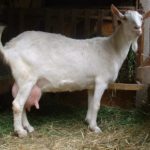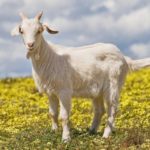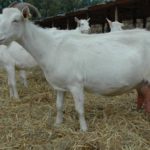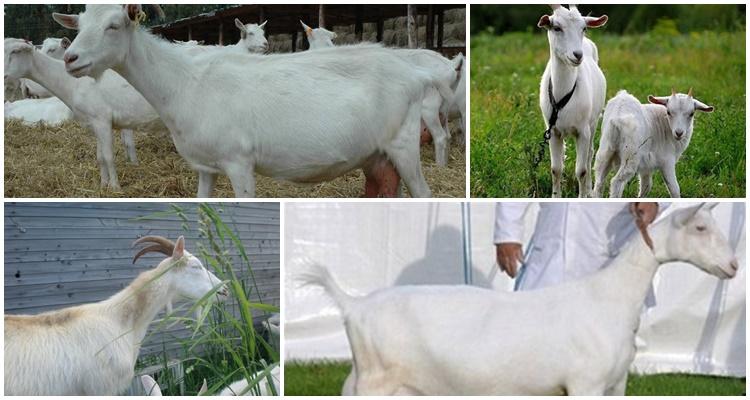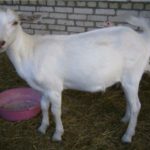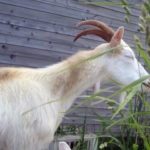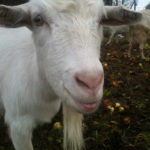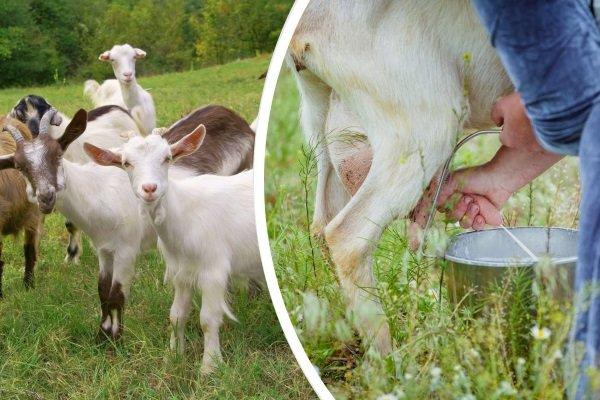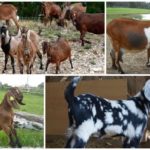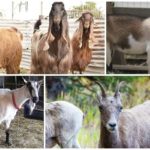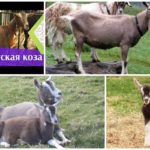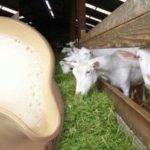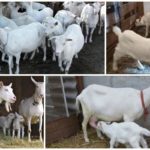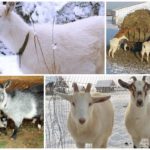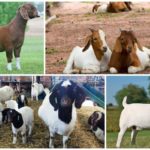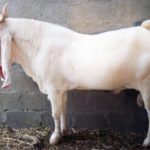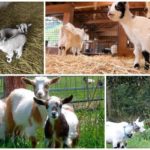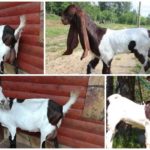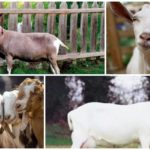The Gorky breed of white goats is well known to rural residents. These are small (about half a meter in height) animals that produce 1-3 liters of tasty and fatty milk per day. Goats almost never get sick if they are kept clean and fed with high-quality feed. These animals tolerate sub-zero temperatures well, are very mobile and give birth to 2-3 kids every year.
History of the breed
Goats of the Gorky breed appeared from crossing Russian goats with Saanen goats, which were brought privately at the end of the 19th century to the Nizhny Novgorod province (Gorky region) from Switzerland.The result was white animals with high rates of fertility and productivity.
Officially, the new breed was registered only under Soviet rule. In the mid-20th century, Gorky goats gained popularity among the rural population of the USSR. Animals are still bred today. This breed is loved for its unpretentiousness, high productivity and fertility.
Description and productivity
Appearance (exterior) and characteristics of the Gorky breed:
- color - white (possible gray markings);
- the coat is short, smooth, with a slight downy undercoat;
- the body is trapezoidal, the belly is barrel-shaped;
- chest circumference - 70-77 cm;
- body length - 65-70 cm;
- the head is small, with a beard and earrings, the ears are narrow and erect, the neck is of medium length;
- legs are located parallel to each other;
- females are usually polled, males have small horns;
- height at the withers - 62 cm, at the rump - 67 cm;
- the udder is round (with noticeable milk veins on the belly), with two cylindrical nipples;
- female weight - 40-45 kg;
- weight of males - 55-65 kg;
- females give birth to 2-3 kids;
- lactation lasts almost 10 months;
- in one lactation period, one female produces more than 500 kg of milk;
- daily milk yield - 1-3 liters;
- milk fat content - 4.5-5.5 percent;
- slaughter yield of meat - 45 percent;
- 250 g of wool is sheared from one animal per year.
Advantages and disadvantages
Features of maintenance and care
Gorky goats tolerate temperate continental climates well. During the entire warm period of the year (from early spring to late autumn), animals can be grazed on pasture. Goats love to explore the area and rarely graze in one place. These mobile animals often eat leaves from bushes and trees.
In the winter keeping room it is necessary to equip a nursery, a feeding trough and a drinking bowl. Straw is laid on the floor. The litter is changed as it gets dirty (every day). The room where animals are kept should always be dry, warm and clean. It is better to install windows under the ceiling. Milk yield indicators will depend on the length of daylight hours in winter (goats do not eat during the dark period of the day).
Feeding
Gorky goats are ruminants. Their main food is grass in summer and hay in winter. Supplements (vegetables, grains) are given in small quantities. For proper stomach function and production of large quantities of milk, it is important that animals eat plenty of grass and hay. In summer, it is advisable to graze goats on pasture. One animal eats up to 8 kg of grass per day. Preferred vegetation is legumes and cereals.
As a top dressing, Gorky goats can be given finely chopped vegetables, beet tops, and grain mixtures. Animals need to be given water 2 times a day (a bucket of water). Milk yield depends on the amount of fluid.
In winter, the animals are given hay. Feed 2-3 times a day.As a top dressing during this period, you can give straw, finely chopped vegetables, grain mixtures (barley, oats, corn), mixed feed, and branches. One animal eats up to 2.5 kg of hay, 1 kg of vegetables, and 0.3 kg of grain mixture per day. In winter, the diet of Gorky goats should include sweetened water, salt, branches of coniferous trees and pharmaceutical vitamin and mineral preparations.
Breeding
Puberty in goats occurs at 5-8 months. True, it is advisable to inseminate females later. The optimal age for fertilization is 13-18 months. The female's pregnancy lasts 5 months. It is advisable to breed animals in late autumn, then goats will be born in early spring, and in the summer they can be grazed on pasture.
A pregnant female is transferred to dry milk 2 months before giving birth and slowly stops milking. 30 days before lambing, milking is stopped completely. The female gives birth to 2-3 kids at a time. Goats give birth independently, without human assistance. Immediately after birth, kids should drink colostrum.
In the first days of life, the cubs feed 5 times a day. Then - three times a day. In the first weeks after birth, goat kids are suckled. Then the animals are transferred to artificial feeding, and the females are given milk. The cubs should be fed with mother's milk for up to 3 months. In the first ten days of life, goat kids begin to try plant foods. Typically, in the summer, young animals are grazed in the meadow, and closer to winter they are sent to slaughter or sold. Milk goats are kept for up to 10 years; peak productivity in females occurs at 3-4 years of age.
Diseases
Gorky goats almost never get sick. These animals have excellent immunity. At 3 months of age, animals are vaccinated against infectious diseases (foot and mouth disease, smallpox, brucellosis, anthrax, rabies).
Main diseases and treatment:
- mastitis, inflammation of the udder (occurs as a result of being kept on dirty bedding, injuries, or improper milking) - treated with diet, thinning drugs (Oxytocin), milking, antibiotics;
- tympany, or accumulation of gases in the rumen (due to the consumption of a large amount of legumes covered with dew) - is treated by stimulating contraction of the rumen, inserting a probe into the esophagus, infusing milk inside;
- ketosis (due to excess grain feed) - treated with diet, consumption of pine branches, sweetened water, vitamin and mineral preparations.

